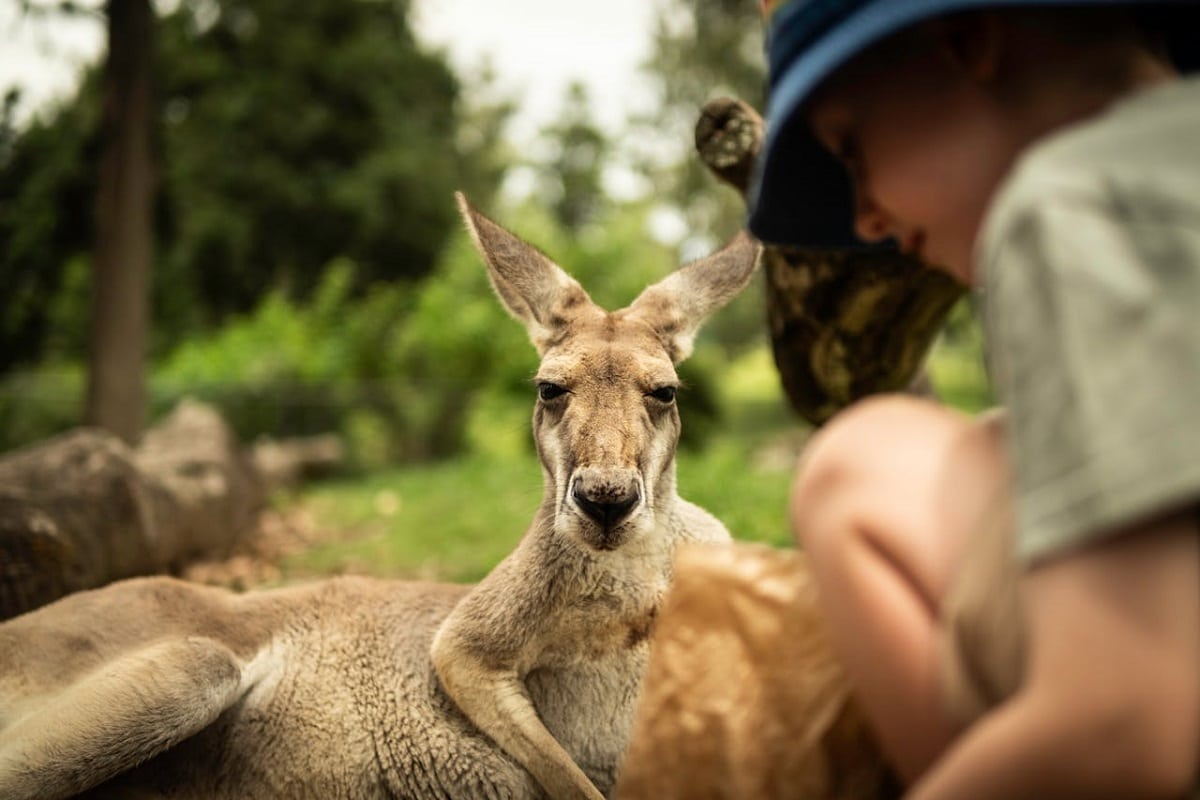Evolution of Australian wildlife is a compelling narrative that stretches back over 100 million years, shaped by continental drift, isolation, and some of the harshest environmental conditions on Earth. From the enigmatic platypus to the agile kangaroo and the melodic lyrebird, Australia is home to species that seem almost mythical. This evolutionary tale is one of survival, adaptation, and extraordinary biodiversity. The continent’s long separation from other land masses allowed its animals to evolve in isolation, leading to unique life forms found nowhere else. According to the Australian Museum, over 80% of the country’s mammals, reptiles, and frogs are endemic—an astonishing figure that highlights the island-continent’s evolutionary uniqueness.
The story begins with Gondwana, the ancient supercontinent. As it gradually broke apart, Australia drifted away about 55 million years ago. This separation allowed ancient lineages like the monotremes to survive while their relatives vanished elsewhere. As noted by the Smithsonian National Museum of Natural History, the egg-laying mammals—the platypus and echidna—are among the world’s most primitive mammals, retaining characteristics from early evolutionary stages. Meanwhile, marsupials such as the koala and wombat diversified into niches typically filled by placental mammals in other continents.
Australia’s aridification over the past 15 million years further molded its wildlife. With much of the land now covered by deserts or dry bushland, species had to evolve strategies for water conservation, heat regulation, and nocturnal lifestyles. The CSIRO documents how animals like the red kangaroo and spinifex hopping mouse adapted their physiology to thrive in water-scarce environments. Reptiles, in particular, have thrived under these conditions, with Australia hosting the greatest diversity of reptiles on Earth. The Australian Reptile Park highlights over 1,000 native species, many with highly specialized survival strategies.
Continental drift didn’t just reshape the land; it also influenced Australia’s marine biodiversity. As the continent moved northwards, warm tropical waters enabled the rise of ecosystems like the Great Barrier Reef, now protected and researched by the Great Barrier Reef Marine Park Authority. This reef supports an immense range of marine life that evolved alongside terrestrial species, adding to the complexity of Australia’s wildlife evolution.
Fossil records across the continent offer tangible links to this evolutionary journey. Sites like the Riversleigh fossil fields, preserved by the Queensland Museum, have uncovered hundreds of extinct species, including giant wombats and marsupial lions. These discoveries help scientists trace species’ adaptations through deep time. As reported by the University of Melbourne, fossil research continues to reveal how climatic shifts and human presence contributed to the extinction of Australia’s megafauna.
Australia’s wildlife evolution is more than a biological chronicle; it’s a tale of resilience and transformation. Organizations like Bush Heritage Australia and the Australian Wildlife Conservancy work tirelessly to conserve these ancient lineages and their habitats. With global warming and habitat loss threatening many species, understanding their evolutionary roots is crucial for shaping conservation strategies.
Origins of Unique Species in Australia
Ancient Lineages and Gondwana Heritage
The evolution of Australian wildlife is deeply rooted in the breakup of the ancient supercontinent Gondwana around 180 million years ago. Australia’s long isolation from other landmasses led to the survival and evolution of ancient lineages. For instance, monotremes such as the platypus and echidna are among the only egg-laying mammals on Earth and represent a lineage that dates back over 100 million years.
Marsupial Dominance
Australia is home to over 250 species of marsupials, accounting for about 70% of the world’s marsupial species. These include kangaroos, wallabies, koalas, and wombats. The absence of placental predators allowed marsupials to thrive, evolving into various ecological niches across the continent.
Endemic Reptiles and Amphibians
Australia has over 1,000 species of reptiles, the highest diversity of reptiles of any country in the world. Many of these species, such as the thorny devil and frill-necked lizard, evolved unique traits to adapt to Australia’s arid and semi-arid environments. These evolutionary paths are unparalleled elsewhere.
Unique Avian Evolution
Birds like the emu and lyrebird reflect ancient evolutionary lines. Australia has more than 850 bird species, with about 45% being endemic. Songbirds are believed to have originated in Australia, a fact supported by fossil and DNA evidence from species like the superb lyrebird and fairy-wrens.
Influence of Fire and Isolation
Australia’s frequent wildfires and geographic isolation have played a critical role in shaping species’ traits. Many plants and animals evolved fire resistance and resilience strategies. The evolution of Australian wildlife thus reflects a long history of adaptation to fire-prone and nutrient-poor ecosystems, sculpting its fauna into globally unique forms.
Impact of Continental Drift on Wildlife Evolution
Separation from Gondwana and Isolation
About 55 million years ago, Australia drifted away from Antarctica, beginning its geographical isolation. This isolation is a cornerstone in the evolution of Australian wildlife, allowing species to evolve independently from the rest of the world. This separation explains the high percentage of endemic species found on the continent.
Limited Competition from Placental Mammals
Due to the absence of placental mammals until human introduction, marsupials filled ecological niches. Species such as the Tasmanian tiger and bandicoots evolved behaviors and traits similar to placental predators elsewhere, a phenomenon known as convergent evolution.
Climate Transformations and Adaptation
As the continent drifted northwards, Australia’s climate changed significantly. By 15 million years ago, rainforests were replaced by grasslands and deserts. As a result, species like kangaroos and wombats adapted to grazing and burrowing. Today, over 60% of Australia’s land is classified as arid or semi-arid, shaping modern adaptations.
Marine Biodiversity and Coral Evolution
Australia’s movement north brought the continent into tropical waters, allowing the formation of the Great Barrier Reef, now home to over 1,500 fish species and 400 species of coral. The marine evolution alongside terrestrial changes has been just as dramatic, enriching the broader picture of the evolution of Australian wildlife.
Evidence from Fossil Records
Fossils from the Riversleigh World Heritage Area reveal evolutionary changes over 25 million years, including extinct giant marsupials like Diprotodon. These fossils offer vital evidence for how continental drift influenced biodiversity over time and led to a unique fauna unmatched anywhere else.
Adaptation to Harsh Australian Environments
Survival in Arid Climates
Australia is the driest inhabited continent, with 70% of its landmass receiving less than 500 mm of rainfall annually. The evolution of Australian wildlife has favored species that can conserve water and endure extreme heat. The red kangaroo, for example, can survive with very little water and regulate its body temperature through specialized behaviors.
Nocturnal and Burrowing Strategies
Many animals, such as the bilby and marsupial mole, are nocturnal or burrowing, which helps them avoid daytime heat. These adaptations highlight behavioral evolution essential for desert life. Over 40 species of Australian mammals are known for their fossorial (burrowing) habits.
Fire Adaptation in Fauna
Fire is a frequent feature in Australian ecosystems, with some regions experiencing it every 2 to 5 years. Animals like the koala have evolved to live in fire-tolerant eucalyptus forests, while others, such as insects and reptiles, rapidly recolonize burnt areas. These traits underscore how fire has shaped the evolution of Australian wildlife.
Salt and Water Scarcity Adaptation
Species such as the emu and thorny devil have evolved to extract water efficiently from food or absorb dew. Desert frogs like the spadefoot toad can burrow and remain dormant for months, emerging only during rare rains—a remarkable evolutionary adaptation.
Case of the Spinifex Hopping Mouse
This rodent species lives in desert areas with temperatures above 45°C and has adapted to survive entirely without drinking water. Its kidneys are highly efficient, producing concentrated urine. Such physiological changes provide insight into how extreme environments drive evolutionary specialization.
Fossil Discoveries and What They Reveal
Riversleigh Fossil Sites and Megafauna
The Riversleigh fossil fields in Queensland contain remains of over 300 extinct species, including giant wombats and the marsupial lion (Thylacoleo carnifex), offering a window into the past evolution of Australian wildlife. These fossils date back 15 to 25 million years and show transitional forms not found elsewhere.
Diprotodon and the Ice Age
Diprotodon, the largest known marsupial, weighed up to 2,800 kg and roamed Ice Age Australia. Its fossils, found across the continent, highlight how large-bodied herbivores adapted to changing environments. Their extinction around 46,000 years ago aligns with the arrival of humans, suggesting a major ecological shift.
Fossil Birds and Avian Origins
Fossils of ancient songbirds and flightless birds like Genyornis, which grew up to 2 meters tall, indicate Australia’s significant role in avian evolution. Genyornis fossils show it went extinct around 47,000 years ago, likely due to climate change and human hunting.
Mesozoic Reptiles and Dinosaur Evidence
In regions like Winton, Queensland, dinosaur fossils from the Cretaceous period, around 100 million years ago, include large sauropods and theropods. These discoveries help reconstruct the climate and ecosystems that shaped early stages in the evolution of Australian wildlife.
Transitional Mammal Fossils
Fossil evidence from species such as Obdurodon dicksoni, an ancient platypus, illustrates the evolutionary bridge between reptiles and mammals. This unique monotreme, with both mammalian and reptilian traits, reinforces Australia’s role as a cradle of evolutionary experimentation.




